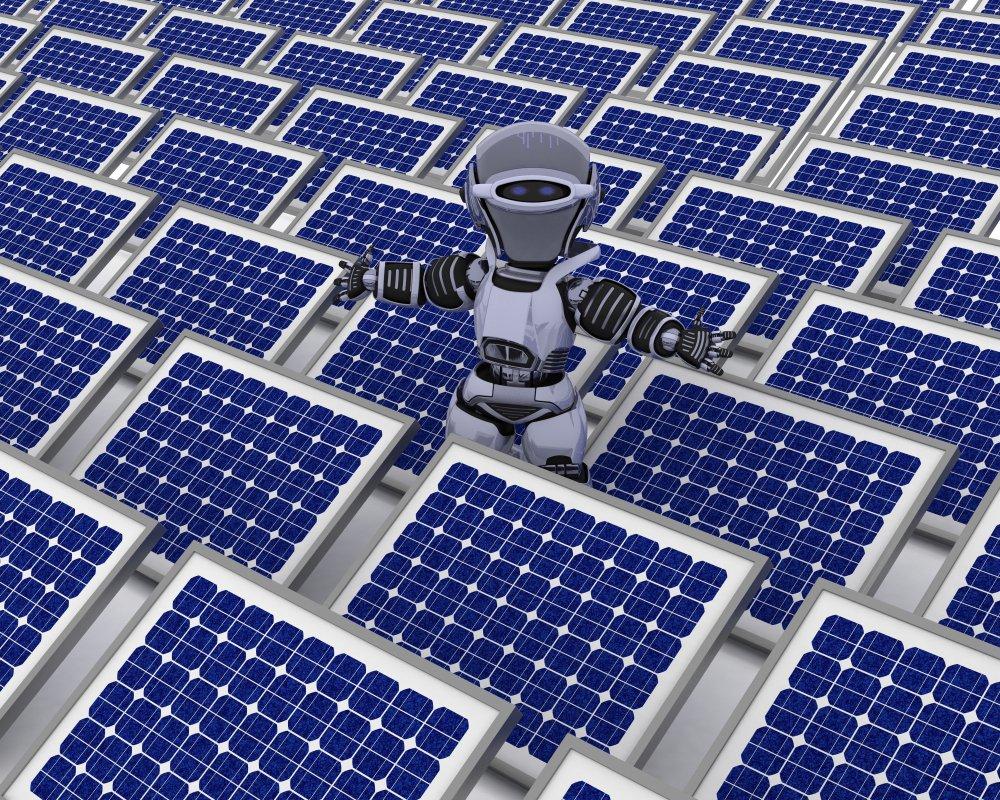Solar power is becoming all-pervasive as the world reconsiders its power usage. Natural rainwater cleans solar panels well, but the efficiency of solar panels can drop if it comes in contact with dust, dirt, bird droppings, and grime. They accumulate on the surfaces, which clogs up and significantly plummets electric generating capacity. As a result, there are different ways to clean Solar Panels efficiently, and Solar Panel cleaning robots appear at the top of the list.

If solar panels are uniform and not slanted downwards, rainwater cannot provide sufficient cleaning. The solar panels have to be dust and grime-free to achieve optimum results. The more productive it will be, the more electricity it will supply, and the more budget-friendly it will be. When searching for cleaning gadgets [1] and supplies to keep your solar panels scintillating, you’ll be glad to know that many products are available. Solar panel cleaning robots are leading the ruling list. Solar panel cleaning robots offer easy, fast, economical, and budget-friendly cleaning. It aims to maintain the development of solar power production.
How Does A Solar Panel Cleaning Robot Work?
It’s advisable taking a keen look at the software implementation of the solar panel cleaning robot. This robot is equipped with a microfiber roller brush and a water sprayer to clean all the dirt and grime from the surface of the panels. Water through an onboard tank is supplied to fill the sprayer.
The rubber caterpillar truck ensures that the robot can move to the slick surface of solar ends. The solar panel cleaning robot is fabricated to clean PV panels on ceiling tops and solar arrays, which is technically challenging. You can target optimum cleaning for high mechanical performance through low water consumption.
The robot operates on the horizontal and vertical panels on the PV module. The robot glides from one panel to another along the horizontal axis; through the vertical axis, the cleaning brush operates.
When the operator presses the switch, the brush starts rotating with the help of a DC motor, and water is sprinkled on the surface through the water pump. This robot operates remotely and wirelessly.
Without the agony of being mentally and physically stressed, the operator can easily handle the solar panel cleaning robot via remote control and achieve optimum cleaning. They were enabling the interested operator the comfort of not stepping onto the sensitive roof and solar surface.
Any external power source is not required close to the working robot as lithium-ion batteries already power the photovoltaic panels.
Solar Panel Cleaning Robots Are Supremely Economical
Manual cleaning is one of the options. The market these days is flooded with robotic technologies [2], providing a pocket-friendly method of cleaning solar panels compared to laborious manual cleaning. Here we mention some of the most effective robotic cleaning systems, such as module cleaning robots, driving robots, and Al-enabled robots.
On-site architects only require replacing batteries, and the cleaning robot does the rest of the work. It is proven that when one person single-handedly operates five robots, it reduces the cleaning cost by almost 80 percent. The remote and wireless operation ensures workers aren’t put in danger.
It has been highly noticed that there has been an increased water usage in solar projects. The usage of solar panel robotic cleaning technology is suggested. It is more economical when the project increases. With an average hike in the cost of manual cleaning, solar park and utility-scale operators are opting for automated cleaning options.
“For an accentuated higher ROI, the robotic cleaning system curtails mainly three cost determinants. The water cost, the higher electricity generation, and the manual labor cost due to daily cleaning.”
Cleaning robots are budget-friendly and cost-effective as compared to manual cleaning. It might take just a couple of years before robotic cleaning takes over the market. Due to decreased cost of these solutions, more developers are moving towards this upgraded technology. The deficiency of water will push the developers toward waterless robotic cleaning.
Features Of Solar Panel Cleaning Robot:

- Portable, compact and user-friendly design.
- Well equipped with a water sprayer along with an onboard water tank.
- The effectiveness of solar panels is well vindicated by keeping them clean.
- Wireless and remote operations ensure workers and engineers aren’t put in danger.
- The roller brush cleans all dust, dirt, grime, and debris.
- On-demand dry and wet cleaning system.
- The cleaning operation is autonomous.
What Is Dry (Robotic) Cleaning?
An optimized method of cleaning, which we also refer to as robotic or dry cleaning, is an enhanced and upgraded waterless cleaning method. It uses dry brushes and air pressure to clean the solar panels and eliminate dust and dirt.
However, a wet cleaning system is always recommended over a dry-cleaning system. The only reason is that the water-involved solution in wet cleaning effectively removes the dust and dirt from the upper surface, considering that water availability is scarce. A dry-cleaning method can be a great option. The cleaning is consistent, optimum, waterless, and tenable.
World’s Best Solar Panel Cleaning Robotics Companies
For your hustle-free survey, we have shortlisted some leading companies where you can look for the best solar panel cleaning robots. Just take a quick view, and you are ready to go:
- Solabot
- Kamay Robotic Pvt. Ltd
- Keenon Robotics
- hyCLEANER SOLAR facelift
- Ecoppia
- Skilancer Solar
- Nocca Robotics
- Miraikikai
- Alion Energy
- SolarCleano
- Inti- Tech
- Greenbotics
- Flip Robotics
- Infliction Labs
Economic Arguments
- The whole concept of robotic cleaning is service-friendly and requires only low maintenance and price.
- There’s Low or bare minimal water consumption.
- Eco-friendly: Enhanced cleaning results without using any harmful cleaning or bleaching agents. A natural and effective way of cleaning.
- Use of commercially available, market-friendly components.
- The solar panel cleaning robot can be easily customized according to the various criteria of different photovoltaic plants and solar plants.
- As regular cleaning keeps at bay the damages caused by dirt and grime, the maintenance value of the solar plant rises.
- The solar panel cleaning robot optimizes the cleaning procedure almost multiple times faster than manual cleaning.
Pros: The Positive Impact
- The solar panel cleaning robots came up with low maintenance and fixed initial costs; on the other hand, large solar power plants require a highly trained workforce & a considerable amount of capital expenditure.
- Solar panel cleaning is attainable even on oblique and slanted roofs.
- There is no physical or mental stress for the user, hence high and constantly good benefits from dawn till dusk.
- The modules can be cleaned every day with the help of robotic cleaning, whereas it is challenging in the case of manual cleaning of modules.
- In the case of dry cleaning, the overall production is optimized when the modules are cleaned regularly compared to wet cleaning.
- Multiple clamping and securing of fixing points enhance the flat positioning of the solar panel cleaning robot.
- The cleaning robot comes with an adjustable driving speed.
Cons: The Negative Impact
- Electricity is required to operate these robotic cleaners efficiently. This generates electricity adds up as an extra cost that increases the amount.
- The investment involved in these robotic solutions is relatively significant and at risk. Hence it is not the pick of the liter for a domestic system.
- As this is quite the latest technology, much research still needs to be done in this field.
- Dry cleaning is ineffectual as compared to water cleaning.
- It is not approved for all installations and may not be ideal for very desertic countries and the middle east.
Conclusion
Now you must be well-versed with solar panel cleaning robots. There’s an increased demand for solar energy, which should increase by 50 percent more in the future. These automated technologies will further promote optimizing the output while non-optimizing the effect. The limitations have an undeviating and deviating impact on solar panel generation.

